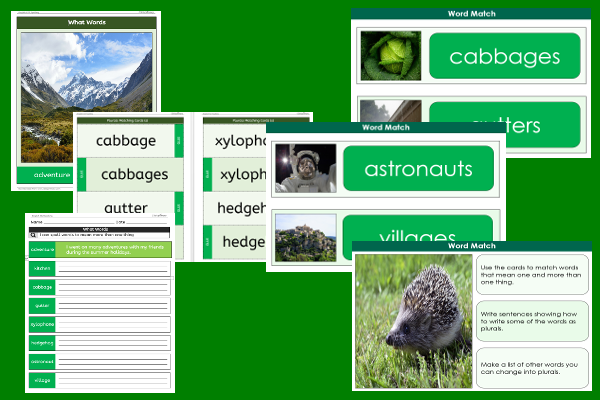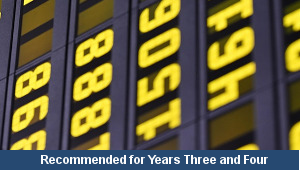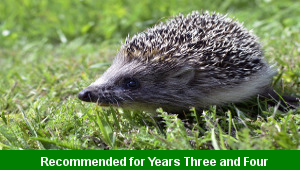Plurals Word Match s

This English teaching pack for Key Stage Two gets the children to identify and record the pairs of singular and plural nouns that can match a spelling rule when adding s to change a range of different words into plurals.
The class can define and model the meaning of some of the plural words they have created by writing example sentences related to the current classroom topic.
Download this teaching pack including display posters, classroom activities and an interactive presentation to identify and record the pairs of singular and plural nouns that can match a spelling rule when adding s to change a range of different words into plurals
Activities in this teaching pack include display posters to identify and define the meaning of different plural nouns, a set of cards to identify singular and plural nouns that match a spelling rule when adding s to change words into plurals and a template to write sentences using singular and plural nouns that match a spelling rule for plurals.
The interactive presentation gets the children to explore singular and plural nouns that match a spelling rule when adding s to change words into plurals.
This lesson can support development in exploring how to identify and record how to convert a range of singular nouns into plurals when using a set of matching spelling rules. There are teaching activities for shared learning, differentiated worksheets to support independent learning and an interactive presentation to introduce concepts and key skills.
-

Rounding Hundreds
Explain and model how to round some different numbers to the nearest hundred based on the place values of the digits in each number
-

Rounding Tens
Identify and record how to round some different numbers to the nearest ten based on the place values of the digits in each number
-

Classic Animal Stories
Investigate the structure and content of classic works of fiction by significant authors with animals as the main characters
-

Cities, Towns and Villages
Research and present the history of a range of different buildings and people that are part of the local community using a school exhibition
